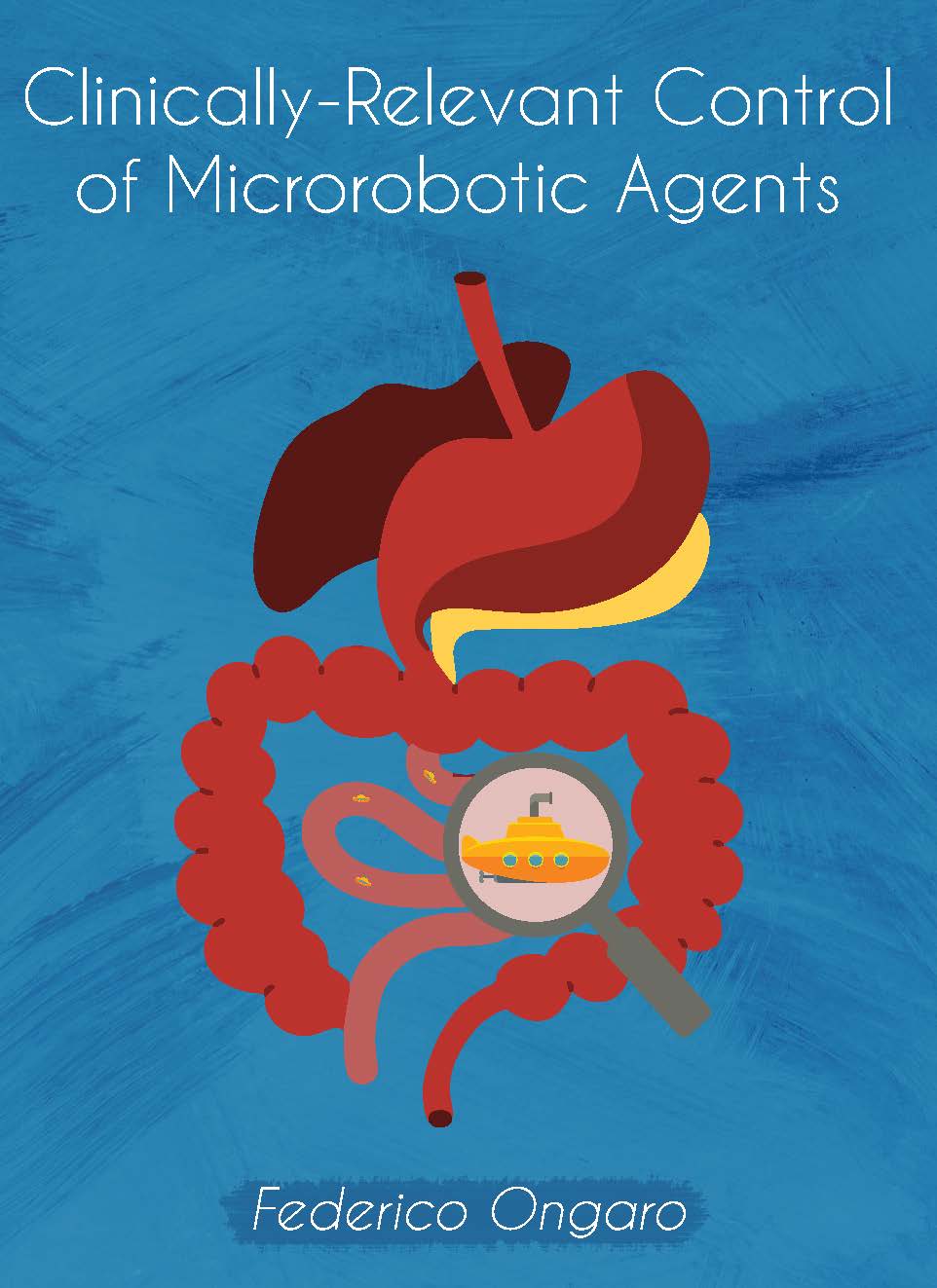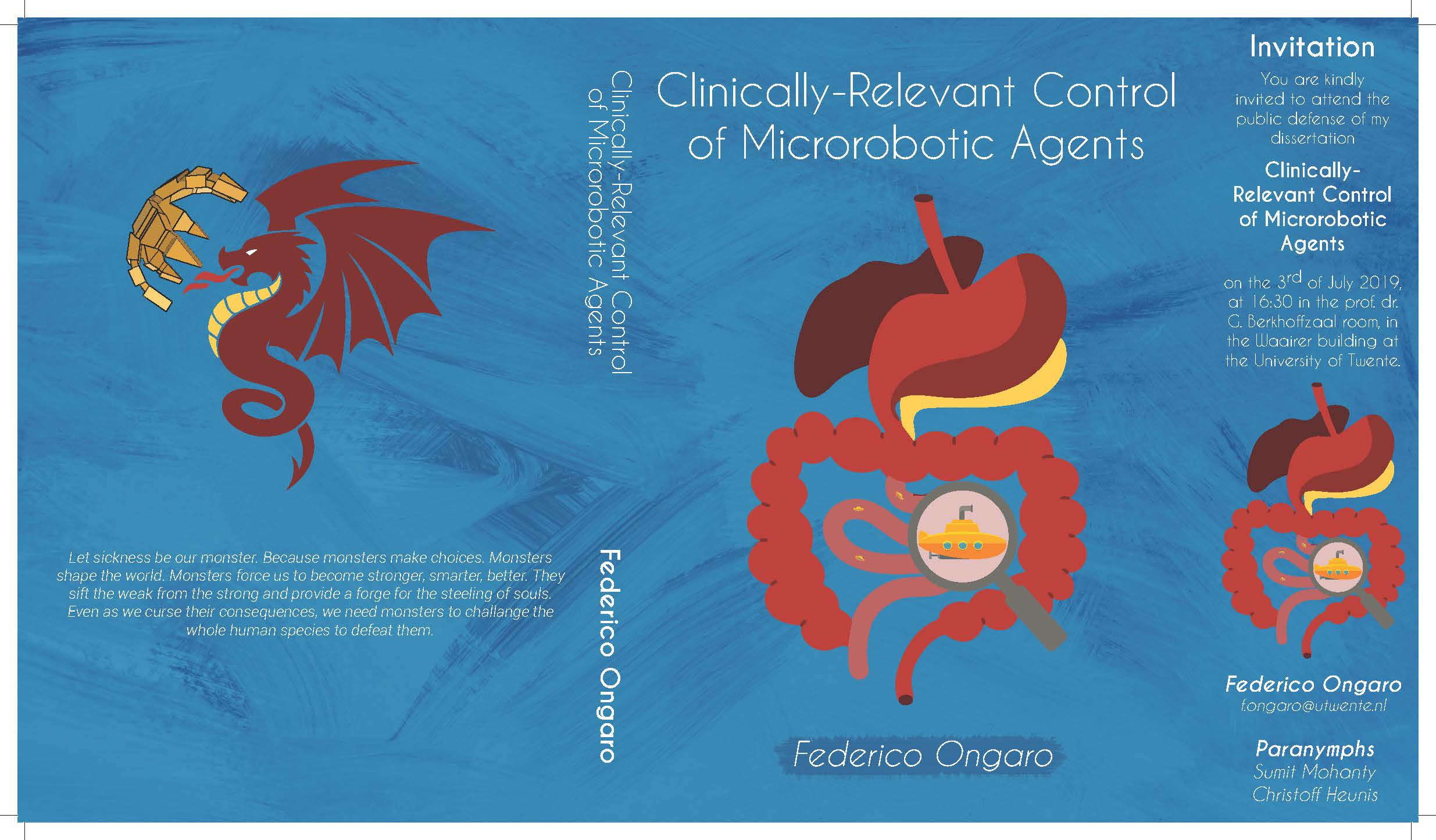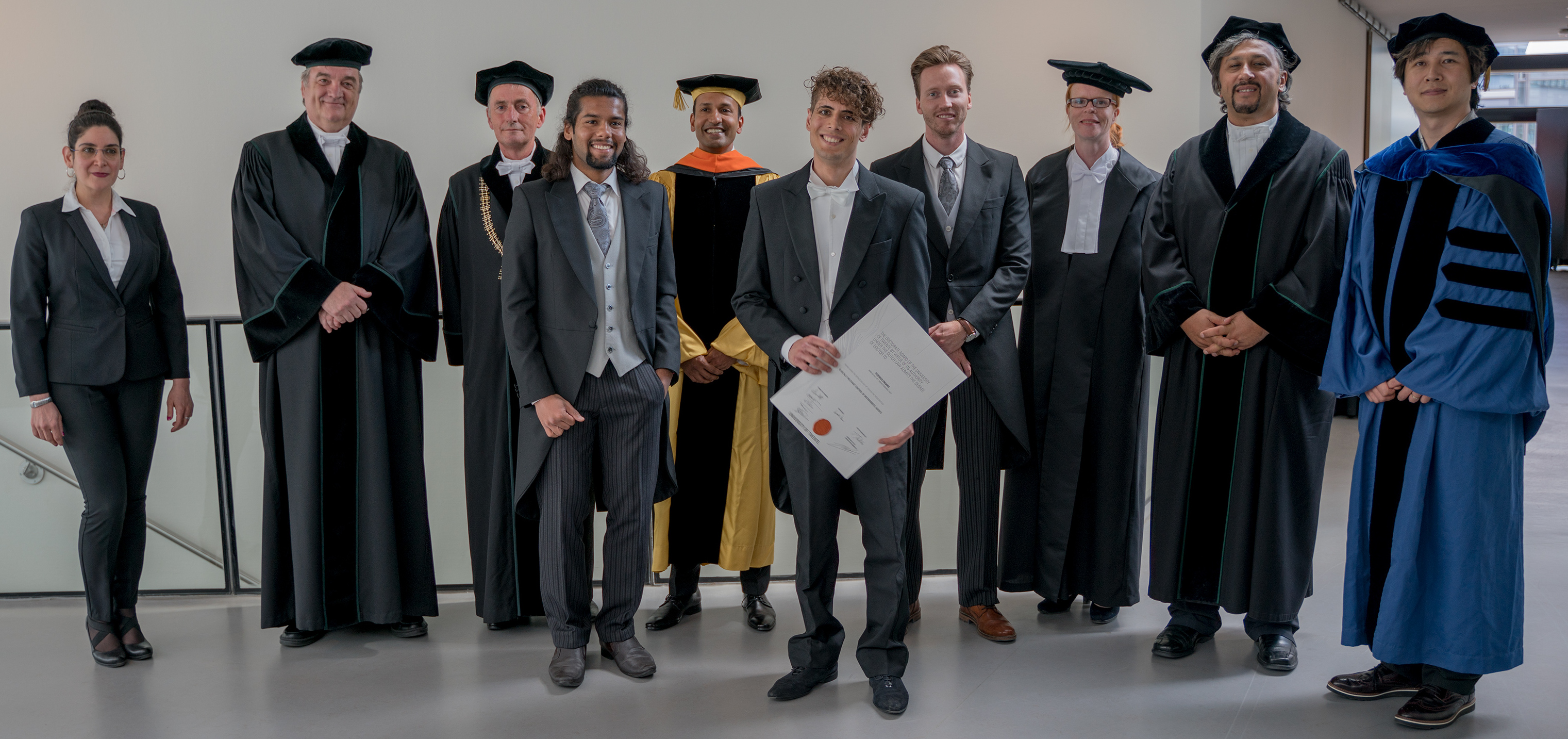
PhD Defense – Federico Ongaro
SRL doctoral candidate defended his thesis
Federico Ongaro defended his doctoral thesis entitled “Clinically- Relevant Control of Microrobotic Agents” on Wednesday, 3rd July, 2019 at 4:30pm in the Prof. dr. G. Berkhoffzaal room, in the Waaier building at the University of Twente.
Dr. Federico Ongaro’s doctoral thesis is available here.
Thesis summary:
In recent years, surgical robotic tools have been introduced in the med- ical environment, leading to a significant decrease in the invasiveness of most surgical procedures. Starting from robotic manipulators, these tools have evolved in a plethora of devices, ranging from robotic endoscopes to steerable needles and catheters. In this doctoral thesis, we investigate an alternative approach to robotic surgery: the development of microscopic and untethered robots capable of navigating the human vascular network and performing surgeries in hard-to-reach areas. In particular, we look at the advantages and limitations of microrobotics, proposing novel solutions to some of the main challenges in the field.
These challenges are presented throughout the four parts of this dissertation. In particular, Part I looks at human-guided two-dimensional micromanipulation, developing techniques to perform cargo operations and to intuitively control microrobots using haptic devices. This initial work demonstrates the capabilities of microrobots in performing cargo operations, determines their limitations and addresses some of them. In point of fact, intuitive approaches to allow the use of microrobotic system by untrained personnel are discussed in this part. Conversely, repeatability, precision, and throughput performance are improved in Part II with the implementation of fully-autonomous two-dimensional micro-manipulation. In this part, we present systems that are capable of operating without human supervision while performing tasks such as sorting of micro-scale objects and pick-and-place of biological material in ex-vivo and dynamic environ- ments. Moreover, this part also discusses how autonomous systems can also be used as an objective platform for the evaluation of microrobotic designs. Part III discusses the groundwork necessary to move to human-in-the-loop three-dimensional microrobotics and presents possible applications of this technology. Initially, two approaches are presented, which allow to precisely model both the microrobots and the experimental setup required for their actuation. These models are then used to demonstrate clinically-compatible contactlessly actuated navigation of microrobots using ultrasound imaging. Part IV presents the last work of the thesis with fully-autonomous three-dimensional microrobotics. Here the process for the design of a novel electromagnetic setup is discussed. We then use this novel setup to demon- strate the capability of microrobots to move independently of each other, even when exposed to the same control inputs. Finally, Part V concludes the thesis drawing overall conclusions and providing direction for future work.
- Prof. dr. S. Misra (University of Twente/University Medical Center Groningen, The Netherlands)
Thesis Committee
- Prof. Dr. G.P.M.R. Dewulf (University of Twente, The Netherlands)
- Prof. Dr. M. Sitti (Max Planck Institute for Intelligent Systems, Germany)
- Prof. Dr. M.M.G. Kamperman (University of Groningen, The Netherlands)
- Prof. Dr. M. Cao (University of Groningen, The Netherlands)
- Prof. Dr. H.F.J.M. Koopman (University of Twente, The Netherlands)
- Dr. N. Meratnia (University of Twente, The Netherlands)


